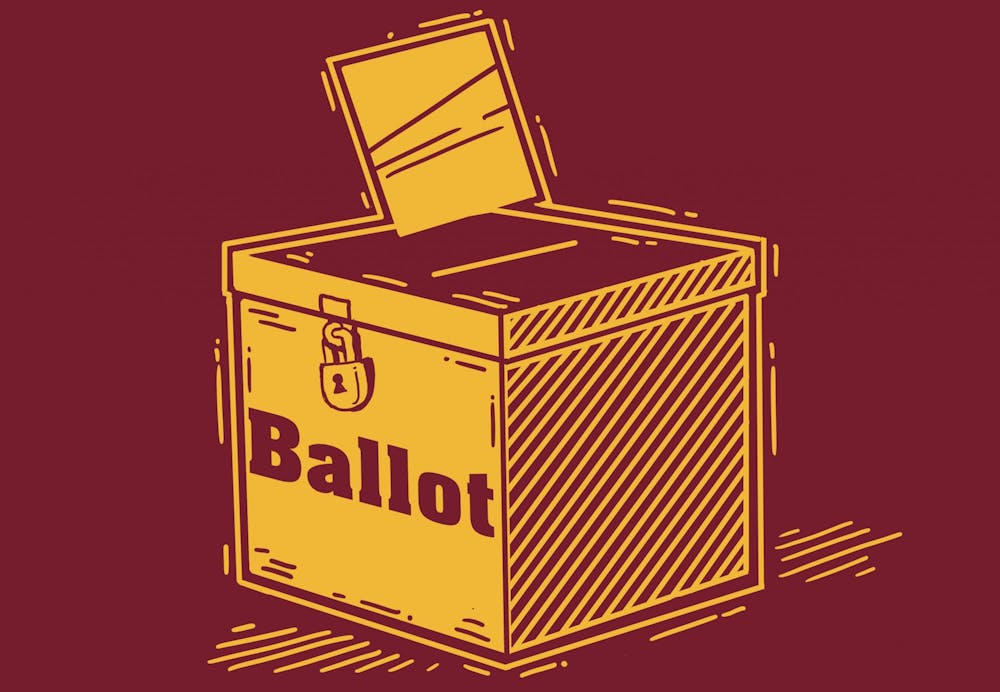As Election Day looms, the conversation surrounding ballot security increases, but experts say it is a safe process with multiple checks and balances in place to ensure votes are counted.
"We've been practicing mail-in voting and early voting for a long period of time," said Thom Reilly, a professor in the School of Public Affairs. "It's been a staple of how we've run elections in Arizona."
Up to 27 days before the election, Arizona voters who choose to be on the Active Early Voting List will receive their ballot in the mail. Those who participate in early voting can return their mail-in ballot by Oct. 29, or they can vote in person at a voting center by Nov. 1 at 7 p.m., according to the official website of the state of Arizona. If voters miss these deadlines, they can still vote in person on Election Day, Nov. 5.
Adrian Borunda, the bilingual communications officer for Maricopa County elections, said the reason people don't trust the mail-in ballot process is because there is a knowledge gap. He said people can have a hard time understanding the process when it comes to "ensuring that a legitimate voter participated in a vote through a mail-in ballot."
The county has multiple resources for voters to understand the process better. There is a virtual tour of what the signature verification process is like and there is live-streamed footage from the signature verification facility on the County Recorder's website.
Voters can also sign in to their dashboard on Be Ballot Ready to track their ballot and get their personalized election information. After returning their ballot in the mail, voters can see when the signature is verified and when it is counted, Borunda said.
"This is all part of the public education that we're trying to put out there," Borunda said. "There's these resources for you to find out what the process is, but also we're as transparent as we can be here at Maricopa County Elections."
Reilly said there are "very few instances where ballots disappear or (are) not counted" because there are audits put in place to "ensure the integrity of the voting system."
Pinny Sheoran, a poll inspector in this year's election, said when an individual receives their ballot and fills it out, they are the only one who ever sees it unless they show someone else.
There is a digital copy and a physical paper for the voter to fill out where both numbers need to match before results are certified. After voters fill out their ballot, they will then put it in the tabulating machine – which is tightly controlled, monitored, locked and requires an election worker to log in for it to work.
"If you take your ballot to a ballot drop box, they're absolutely safe," Sheoran said. "If you take them to the mailbox, they're safe. If you take it to the post office, they're safe. They're probably more (safe) in any of those locations … than if they sat at home on your dining table."
A truck transports the ballots to the signature verification facilities, which have 24/7 broadcasted camera surveillance.
"You won't be able to see your particular ballot being scanned, but it's all there," Sheoran said.
Borunda said his two suggestions for people who don't trust the process are to talk to somebody who works in election verification and to participate in it themselves.
"Those are your neighbors, those are your doctors, your teachers, your mailmen, your business leaders that are up there wanting to be a part of the process and ensuring that it's safe, secure and transparent," Borunda said.
Edited by George Headley, Abigail Beck and Natalia Jarrett.
Reach the reporter at elbradfo@asu.edu and follow @emmalbradford__ on X.
Like The State Press on Facebook and follow @statepress on X.
Emma is a sophomore studying journalism and mass communication and political science, with a minor in business. This is her third semester with The State Press.




